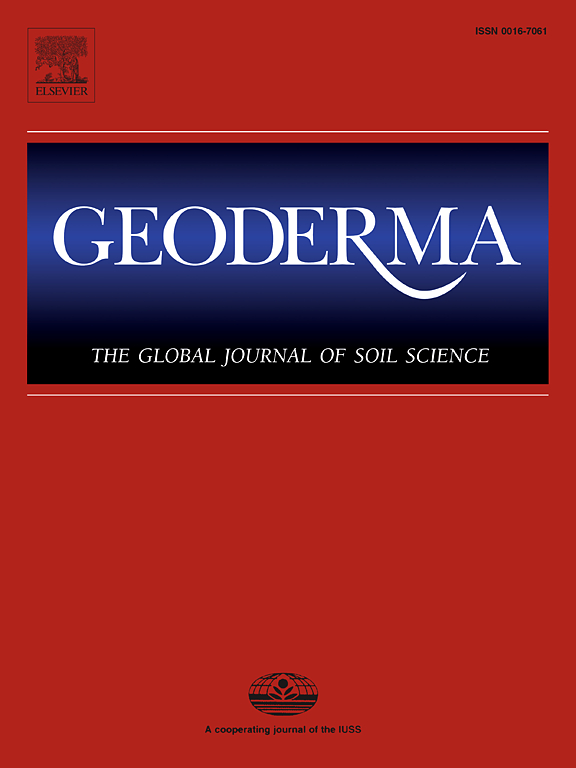Accumulation and effect of contaminants in soil biota following waste stream application in agriculture: A European perspective
IF 5.6
1区 农林科学
Q1 SOIL SCIENCE
引用次数: 0
Abstract
The global food system is under significant pressure from challenges like resource depletion, climate change, and population growth, which drive a heightened demand for food production in conflict with unsustainable methods. Circular agriculture aims to mitigate these challenges by minimizing waste. A promising approach involves utilizing waste as biofertilizers, but this raises concerns about the safety of contaminants such as chemicals, plastics, and pathogens present in waste streams. Soil health, vital for agriculture, faces potential risks from these contaminants. This review examines the accumulation and hazards of waste stream contaminants on soil biota, addressing knowledge gaps and advancing strategies for robust risk assessment based on European studies. Findings reveal a notable disparity between emerging contaminants detected in waste streams and their limited presence in soil organisms. Correlations between bioaccumulation and sub-lethal effects across species, contaminants, and waste streams are sparse, reflecting critical gaps in understanding. In particular, behavioural changes in soil organisms, which significantly influence soil functionality and ecosystem processes, remain underexplored. To address these gaps, an ecological perspective that considers the roles of diverse soil species is crucial. Earthworms, with their sensitivity to toxic stress (avoidance behaviour) and ecological functions (bioturbation), are highlighted as essential bioindicators. Evaluating their responses to waste stream applications offers insights into soil toxicity and fertility. By balancing toxic stress with the potential benefits of waste utilization under specific environmental conditions, this approach aims to enhance soil health while supporting sustainable agricultural practices.

农业废物流应用后污染物在土壤生物群中的积累和影响:欧洲视角
全球粮食系统面临着资源枯竭、气候变化和人口增长等挑战的巨大压力,这些挑战推动了对与不可持续方法相冲突的粮食生产的更高需求。循环农业旨在通过减少浪费来缓解这些挑战。一种很有前途的方法是利用废物作为生物肥料,但这引起了人们对废物流中存在的化学品、塑料和病原体等污染物的安全性的担忧。对农业至关重要的土壤健康面临来自这些污染物的潜在风险。本文综述了废物流污染物对土壤生物群的积累和危害,解决了知识空白,并基于欧洲研究提出了强有力的风险评估策略。研究结果显示,在废物流中检测到的新出现的污染物与它们在土壤生物中的有限存在之间存在显着差异。物种、污染物和废物流之间的生物积累和亚致死效应之间的相关性很少,这反映了理解上的重大差距。特别是,土壤生物的行为变化对土壤功能和生态系统过程有重大影响,但仍未得到充分探索。为了解决这些差距,考虑不同土壤物种作用的生态学观点至关重要。蚯蚓由于其对毒性应激的敏感性(回避行为)和生态功能(生物扰动),被强调为必不可少的生物指标。评估它们对废物流应用的反应提供了对土壤毒性和肥力的见解。通过平衡有毒压力与特定环境条件下废物利用的潜在效益,该方法旨在增强土壤健康,同时支持可持续农业做法。
本文章由计算机程序翻译,如有差异,请以英文原文为准。
求助全文
约1分钟内获得全文
求助全文
来源期刊

Geoderma
农林科学-土壤科学
CiteScore
11.80
自引率
6.60%
发文量
597
审稿时长
58 days
期刊介绍:
Geoderma - the global journal of soil science - welcomes authors, readers and soil research from all parts of the world, encourages worldwide soil studies, and embraces all aspects of soil science and its associated pedagogy. The journal particularly welcomes interdisciplinary work focusing on dynamic soil processes and functions across space and time.
 求助内容:
求助内容: 应助结果提醒方式:
应助结果提醒方式:


